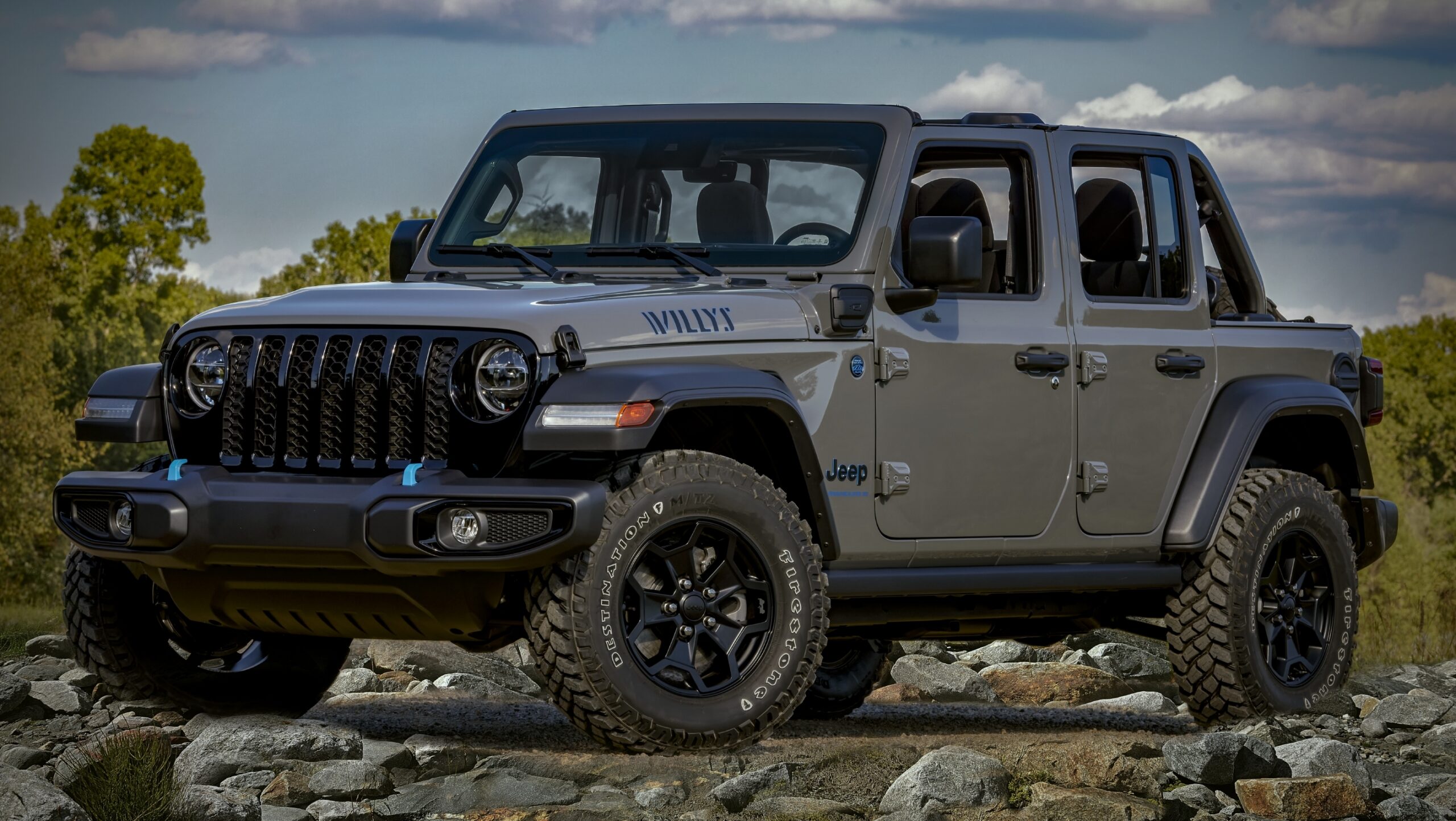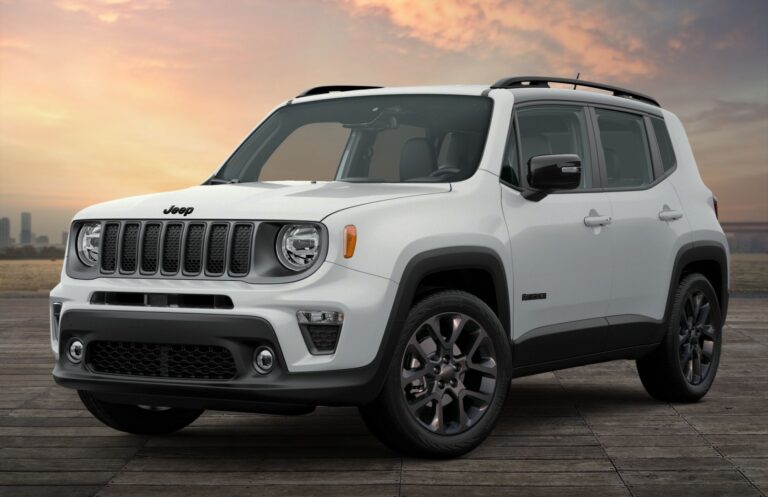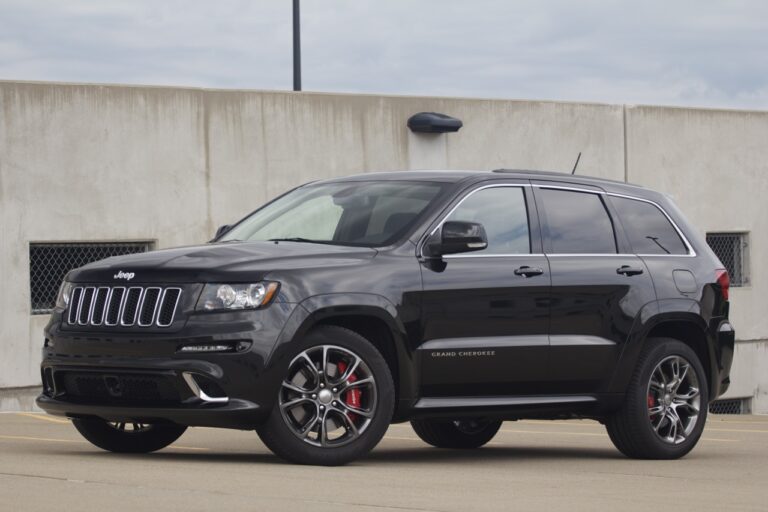Jeep Patriot Rims For Sale: A Comprehensive Guide to Upgrading Your Ride
Jeep Patriot Rims For Sale: A Comprehensive Guide to Upgrading Your Ride /jeeps.truckstrend.com
The Jeep Patriot, with its distinctive blend of rugged capability and urban practicality, has carved out a unique niche in the compact SUV market. Owners often appreciate its versatile nature, but like any vehicle, its aesthetics and performance can be significantly enhanced by the right set of wheels. When considering "Jeep Patriot Rims For Sale," you’re not just looking for a functional component; you’re exploring an opportunity to personalize your vehicle, improve its stance, and potentially even boost its driving dynamics. This comprehensive guide will navigate the intricacies of purchasing rims for your Jeep Patriot, covering everything from understanding specifications to finding the best deals and ensuring a perfect fit.
Rims, often interchangeably called wheels, are much more than just a place to mount your tires. They are critical to your vehicle’s safety, handling, and overall appearance. For Jeep Patriot owners, the decision to buy new rims might stem from a desire for a fresh look, the need to replace damaged originals, or the ambition to optimize performance for specific driving conditions. Whatever your motivation, making an informed choice is paramount. This article aims to be your definitive resource, helping you confidently explore the vast market of Jeep Patriot rims.
Jeep Patriot Rims For Sale: A Comprehensive Guide to Upgrading Your Ride
Understanding Your Jeep Patriot Rims: The Fundamentals
Before diving into the "for sale" listings, it’s crucial to understand the foundational specifications of your Jeep Patriot’s wheels. These details ensure compatibility, safety, and optimal performance.
- Bolt Pattern: The most critical specification. For all model years of the Jeep Patriot (2007-2017), the bolt pattern is 5×114.3mm (or 5×4.5 inches). This means there are five lug holes, and they are arranged in a circle with a diameter of 114.3 millimeters. Deviating from this pattern is not an option without adapters, which are generally not recommended for daily driving due to added complexity and potential safety concerns.
- Diameter: Stock Patriot rims typically range from 16 to 18 inches. While you can sometimes go up or down an inch or two, larger diameters often require lower-profile tires, which can impact ride comfort, and smaller diameters might not clear brake calipers.
- Width: The width of the rim is usually measured in inches, from bead seat to bead seat. Common widths for the Patriot are 6.5 to 7.5 inches. Matching the rim width to your tire’s recommended range is essential for proper tire fitment and handling.
- Offset: This measurement (in millimeters) determines how far the wheel sits inward or outward from the mounting hub. A positive offset means the mounting surface is towards the front (outboard) side of the wheel, while a negative offset means it’s towards the back (inboard) side. Stock Patriot offsets generally fall in the +35mm to +40mm range. Changing the offset significantly can affect steering geometry, suspension clearance, and fender clearance.
- Center Bore: This is the hole in the center of the wheel that fits over the vehicle’s hub. The Jeep Patriot’s center bore is 67.1mm. It’s crucial that the new wheel’s center bore is either exactly 67.1mm (hub-centric fit) or larger, requiring hub-centric rings to ensure a snug fit and prevent vibrations.

Understanding these specifications will empower you to filter listings and ask the right questions when searching for "Jeep Patriot Rims For Sale."
Why Buy New Rims? Benefits and Reasons
The decision to invest in new rims for your Jeep Patriot can be driven by a variety of compelling reasons:
- Aesthetic Enhancement and Customization: This is often the primary motivator. New rims can dramatically alter your Patriot’s appearance, making it stand out from the crowd. Whether you prefer a sleek, modern look, a rugged off-road style, or a classic OEM aesthetic, the right rims can transform your vehicle.
- Replacement of Damaged Rims: Potholes, curbs, and accidents can bend, crack, or heavily scratch your existing rims, compromising safety and appearance. Replacing damaged rims is crucial for maintaining vehicle integrity.
- Performance Improvement: Lighter alloy rims can reduce unsprung weight, leading to improved acceleration, braking, and handling. Some designs also offer better brake cooling.
- Seasonal Tire Setups: Many owners opt for a dedicated set of winter tires mounted on a separate set of rims (often steel for durability and cost-effectiveness). This allows for quick and easy seasonal tire changes without the added expense and wear of frequent mounting/dismounting on a single set of rims.
- Upgrade to a Different Size: Moving from 16-inch to 17-inch or 18-inch rims can change the vehicle’s stance and often allow for a wider selection of performance tires.
- Corrosion or Wear: Over time, especially in areas with harsh winters, OEM steel or alloy rims can suffer from significant corrosion, affecting both appearance and safety.


Types of Jeep Patriot Rims Available
The market for Jeep Patriot rims offers a diverse range of options:
- OEM (Original Equipment Manufacturer) Replacements: These are identical to the rims that came with your Patriot from the factory. They guarantee a perfect fit and maintain the original look. You can find them new from dealerships, used from salvage yards, or refurbished from specialized shops.
- Aftermarket Rims: This category offers the widest variety in terms of style, material, and price. Aftermarket brands design rims to fit various vehicles, including the Patriot, providing countless aesthetic choices.
- Steel Rims: Typically heavier and less visually appealing, but very durable and affordable. Often preferred for winter setups or heavy-duty use due to their resistance to bending and ease of repair.
- Alloy Rims (Aluminum Alloy): Lighter, stronger, and more visually appealing than steel. They come in various finishes (painted, machined, chrome, polished). They are more susceptible to bending or cracking upon impact than steel but offer performance benefits.
- Forged Rims: A type of alloy rim made through a forging process, resulting in extremely strong and lightweight wheels. They are typically much more expensive but offer superior performance.
- Finishes: Rims come in a spectrum of finishes, including:
- Painted: Most common, offering a wide range of colors (black, silver, gunmetal, etc.).
- Machined: Features polished metal accents over a painted base, creating a two-tone look.
- Chrome: A highly reflective, mirror-like finish that offers a luxurious or classic look but can be prone to peeling or pitting over time.
- Polished: A bright, reflective finish without a coating, requiring regular maintenance to prevent oxidation.
Where to Find Jeep Patriot Rims For Sale
The search for "Jeep Patriot Rims For Sale" can lead you to various outlets, each with its pros and cons:
- Online Marketplaces (eBay, Amazon, Facebook Marketplace): These platforms offer a vast selection of new and used rims from individual sellers and businesses. They are great for finding specific styles or budget-friendly options but require careful vetting of sellers and product descriptions.
- Dedicated Online Wheel Retailers: Websites like Tire Rack, Discount Tire Direct, Custom Offsets, and many others specialize in wheels and tires. They offer extensive fitment guides, customer reviews, and often provide package deals with tires. They are generally reliable but might have slightly higher prices than individual sellers.
- Local Tire and Wheel Shops: Visiting a physical store allows you to see rims in person, get expert advice on fitment, and often includes installation services. Prices might be higher, but the convenience and service can be worth it.
- Jeep Dealerships: They sell genuine OEM rims, guaranteeing perfect fitment and quality. However, prices are typically the highest here.
- Salvage Yards/Junkyards: A potential source for very affordable used OEM rims. Inspection is crucial, as rims from salvage yards may have hidden damage. Always buy from a reputable yard and thoroughly inspect the rims before purchase.
- Direct Manufacturers: Some aftermarket wheel brands sell directly to consumers, sometimes offering competitive pricing or unique customization options.
Key Considerations When Buying Rims
Making an informed decision requires careful consideration of several factors beyond just aesthetics:
- Compatibility is Paramount: Reiterate the bolt pattern (5×114.3mm), diameter, width, offset, and center bore. Use online fitment tools provided by reputable retailers. Incorrect fitment can lead to rubbing, premature wear, and dangerous handling issues.
- Material Choice: Steel for budget and durability, alloy for weight savings, aesthetics, and performance. Weigh the pros and cons based on your driving needs and budget.
- Condition (for Used Rims): If buying used, thoroughly inspect for cracks, bends, deep scratches, curb rash, and excessive corrosion. Even minor damage can affect balancing, tire bead seating, and overall safety. Ask for detailed photos or inspect in person.
- Budget: Set a realistic budget, remembering to factor in potential additional costs like mounting, balancing, new TPMS sensors, and hub-centric rings. Prices can range from under $100 per used steel rim to several hundred dollars per premium alloy wheel.
- Style and Aesthetics: Choose a style that complements your Patriot’s look and your personal taste. Consider the finish – some finishes are easier to maintain than others.
- Tire Compatibility: Ensure the new rims are compatible with your current tires, or factor in the cost of new tires. The tire size must match the rim’s width and diameter.
- TPMS (Tire Pressure Monitoring System): Your Patriot has TPMS sensors. If your new rims don’t come with them, you’ll need to transfer your old ones (if compatible and in good condition) or purchase new ones. New sensors will likely require programming or a "relearn" procedure by a professional.
- Weight: Lighter rims generally improve performance by reducing unsprung weight. If performance is a priority, compare wheel weights.
The Buying Process: A Step-by-Step Guide
- Define Your Needs and Budget: What’s your primary goal (aesthetics, performance, replacement)? How much are you willing to spend?
- Research Compatible Options: Use the specifications (5×114.3mm bolt pattern, 67.1mm center bore, appropriate diameter and offset) to narrow down your search. Utilize online fitment guides.
- Compare Prices and Reputable Sellers: Look for sellers with good reviews and clear return policies. Be wary of deals that seem too good to be true.
- Inspect Rims (Especially Used): Ask for detailed photos or arrange an in-person inspection. Look for signs of damage.
- Consider Installation Costs: Factor in the cost of mounting, balancing, and TPMS service if not included in the rim price.
- Check Return Policies and Warranties: Understand the seller’s return policy in case of fitment issues or damage. New rims often come with a warranty.
Installation and Maintenance Tips
- Professional Installation: While some DIY enthusiasts might attempt it, professional installation is highly recommended. Tire shops have the specialized equipment to mount tires, balance wheels accurately, and properly torque lug nuts.
- Torque Specifications: Always ensure lug nuts are tightened to the manufacturer’s specified torque. Overtightening can warp rotors or strip studs, while undertightening can cause wheels to come loose. Re-torque after 50-100 miles.
- Regular Cleaning: Clean your rims regularly with appropriate wheel cleaner to prevent brake dust and road grime from building up and damaging the finish.
- Tire Rotation and Balancing: Adhere to your vehicle’s recommended tire rotation schedule to ensure even tire wear. Re-balancing might be necessary if you notice vibrations.
- Winter Care: If you live in a snowy region, consider a dedicated set of winter rims, preferably steel, or ensure your alloy rims have a durable clear coat. Salt and de-icing chemicals can be very harsh on finishes.
Potential Challenges and Solutions
- Incorrect Fitment:
- Challenge: Rims don’t fit due to incorrect bolt pattern, offset, or center bore.
- Solution: Double-check all specifications before purchase. Use reputable online fitment tools. Ensure the seller has a clear return policy for fitment issues.
- Damaged Used Rims:
- Challenge: Used rims appear fine but have hidden cracks, bends, or unrepairable damage.
- Solution: Thoroughly inspect rims in person or request multiple detailed photos/videos from the seller. If buying online, ensure buyer protection or a return policy is in place. Consider having them professionally inspected before mounting tires.
- Shipping Damage:
- Challenge: Rims arrive scratched or bent during transit.
- Solution: Inspect the package and rims immediately upon arrival. Document any damage with photos and contact the seller and shipping company promptly.
- TPMS Issues:
- Challenge: TPMS light comes on after new rims are installed.
- Solution: Ensure TPMS sensors were properly transferred or new ones installed. Most new sensors require programming or a "relearn" procedure, which a tire shop can perform.
Jeep Patriot Rims For Sale: Estimated Price Table
Prices for Jeep Patriot rims can vary significantly based on condition (new, used, refurbished), material (steel, alloy), brand, finish, and the specific retailer. This table provides estimated price ranges per single rim, excluding shipping, mounting, balancing, or TPMS sensors.
| Category | Material | Condition | Typical Diameter (Inches) | Estimated Price Per Rim (USD) | Notes |
|---|---|---|---|---|---|
| Used OEM Steel Rims | Steel | Fair to Good | 16" – 17" | $40 – $80 | Good for winter sets, some surface rust possible. |
| Used OEM Alloy Rims | Alloy | Fair to Good | 16" – 18" | $70 – $150 | May have curb rash, minor scratches; inspect for bends/cracks. |
| Refurbished OEM Alloy Rims | Alloy | Like New | 16" – 18" | $120 – $250 | Professionally repaired and refinished. Good value for OEM look. |
| New Aftermarket Steel Rims | Steel | New | 16" – 17" | $60 – $100 | Basic black steel, perfect for winter tires. |
| New Aftermarket Alloy Rims | Alloy | New | 16" – 18" | $100 – $250 | Wide range of styles, finishes; budget to mid-range brands. |
| Premium Aftermarket Alloy Rims | Alloy | New | 17" – 18" | $250 – $500+ | High-performance, specific brands, unique finishes, or forged options. |
Disclaimer: These are estimates and can fluctuate based on market demand, availability, sales, and the specific vendor. Always check current prices from multiple sources.
Frequently Asked Questions (FAQ)
Q1: What is the standard bolt pattern for a Jeep Patriot?
A1: All Jeep Patriot models (2007-2017) use a 5×114.3mm (or 5×4.5 inches) bolt pattern.
Q2: Can I put bigger rims on my Jeep Patriot?
A2: Yes, typically you can go up one or two inches in diameter (e.g., from 16" to 17" or 18") provided the overall tire diameter remains close to stock to avoid rubbing or speedometer errors. Always check for proper clearance with suspension and fenders.
Q3: Do I need new tires if I get new rims?
A3: Not necessarily. If your new rims are the same diameter and width as your current ones, and your tires are in good condition, you can often reuse them. However, if you change rim diameter or width significantly, you will likely need new tires that are compatible with the new rim size.
Q4: How much do Jeep Patriot rims typically cost?
A4: Prices vary widely. Used steel rims can start from $40-$80 each, while new aftermarket alloy rims range from $100-$250+ per rim. Premium or forged wheels can cost significantly more.
Q5: Are used rims safe to buy?
A5: Yes, but with caution. Thoroughly inspect used rims for cracks, bends, deep gouges, or excessive corrosion. Buying from reputable sellers or having them professionally inspected before mounting tires is recommended.
Q6: What’s the difference between wheel offset and backspacing?
A6: Both measurements describe where the wheel sits in relation to the hub. Offset is the distance from the wheel’s mounting surface to the wheel’s true centerline, measured in millimeters. Backspacing is the distance from the mounting surface to the wheel’s rear edge, measured in inches. They are related, and both influence wheel clearance.
Q7: Do TPMS sensors need to be replaced with new rims?
A7: If your new rims don’t come with TPMS sensors, you’ll need to transfer your old ones or purchase new ones. If you buy new sensors, they will need to be programmed or "relearned" by your vehicle’s system, usually by a tire shop.
Conclusion
Finding "Jeep Patriot Rims For Sale" is an exciting opportunity to revitalize your vehicle’s appearance and potentially enhance its performance. By understanding the critical specifications like bolt pattern, diameter, width, offset, and center bore, you can ensure a safe and compatible fit. Whether you prioritize budget, durability, aesthetics, or performance, the market offers a diverse array of options, from robust steel wheels to lightweight, stylish alloys.
Remember to conduct thorough research, inspect products carefully, and consider the total cost including installation and any necessary accessories like TPMS sensors or hub-centric rings. With the right approach, you can confidently navigate the market and select the perfect set of rims that not only complement your Jeep Patriot’s unique character but also elevate your driving experience. Your Patriot deserves to roll in style, and the right rims are the key to achieving that perfect look and feel.






